Those that know us, know that Jorge and I like working as a team: he drives, I enjoy the views. I cook, Jorge eats! So far, the team has worked mostly well! But sometimes, we like inverting roles. For that reason, it does happen that, occasionally, I drive the motorbike (in my dreams) and Jorge attempts to cook (with the end result generally being a disaster). In order to reverse this result, we have enrolled in a cooking course when we were in Battambang, Cambodia.
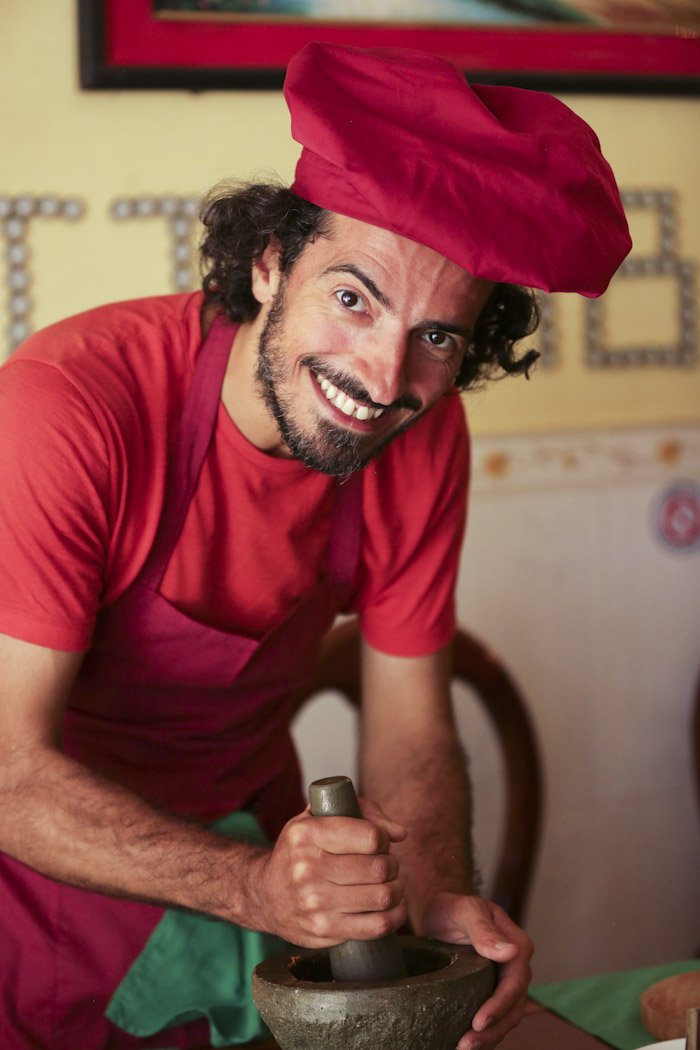
Before we started the lesson, and together with the chef, we decided on the menu that we would cook. The course consisted of three dishes:
- starter: green mango salad and fried spring rolls
- main course: the traditional and famous Cambodian Amok
- dessert: coconut Lyly
1. Visit to the market to buy the ingredients
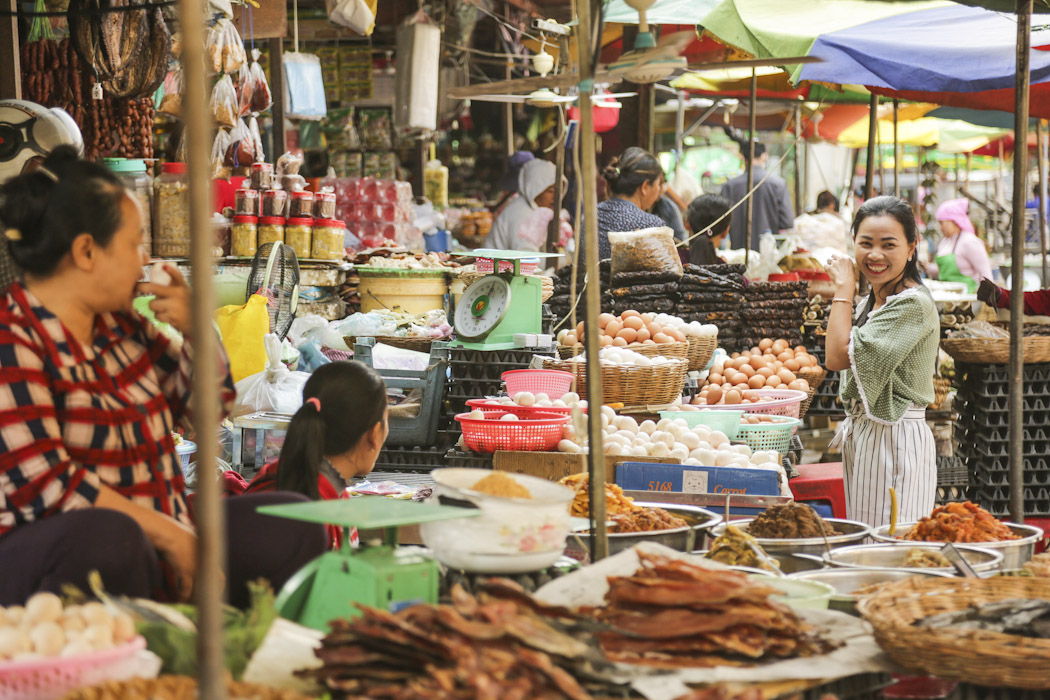
The course started with a visit to the market in order to buy the ingredients. But more than just shopping, the visit to the market was also the opportunity for our host to show us the many vegetables that we were unfamiliar with. We learnt about their names and we found out how freshly grated coconut is done, and what ingredients the sauce of our Amok will take.
2. Preparation of the Coconut Lyly dessert
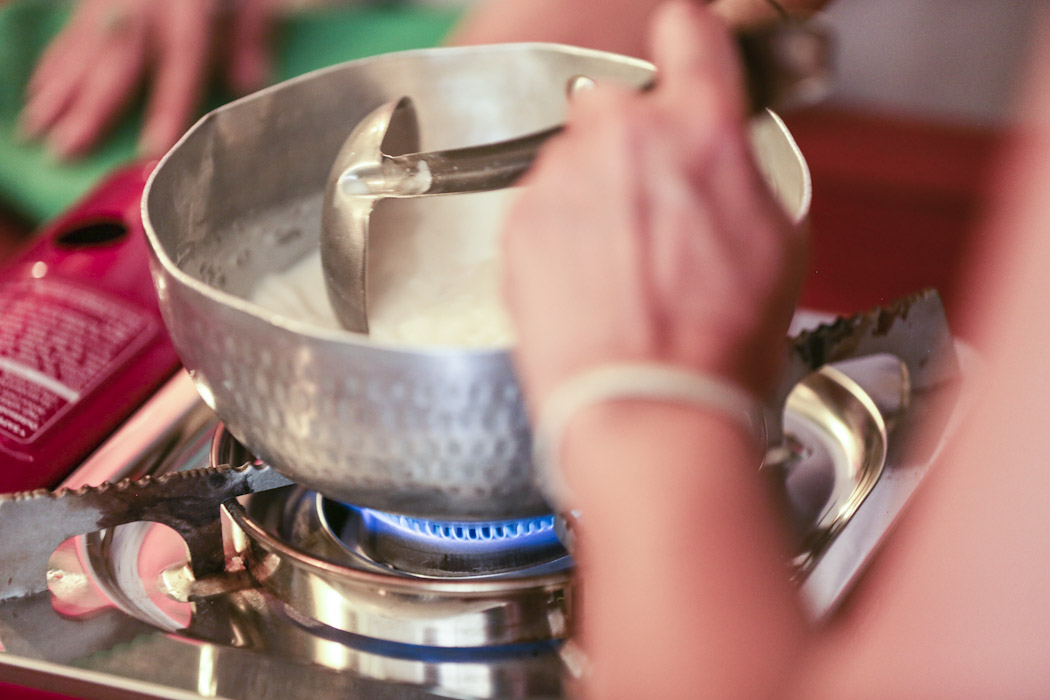
Coconut Lyly is a specialty of the chef at the restaurant Coconut Lyly, where we were having our course. This recipe is so simple, that it can be easily done at home. It took us less than ten minutes to prepare it. All we had to do was adding the grated coconut on coconut milk on a pan and have it slowly boil for a couple of minutes. Afterwards, we added vanilla and sugar. Once all was well mixed, we split the content of the pan into smaller ramekins and put them in the fridge until served!
3. The main course: the traditional Cambodian dish Amok
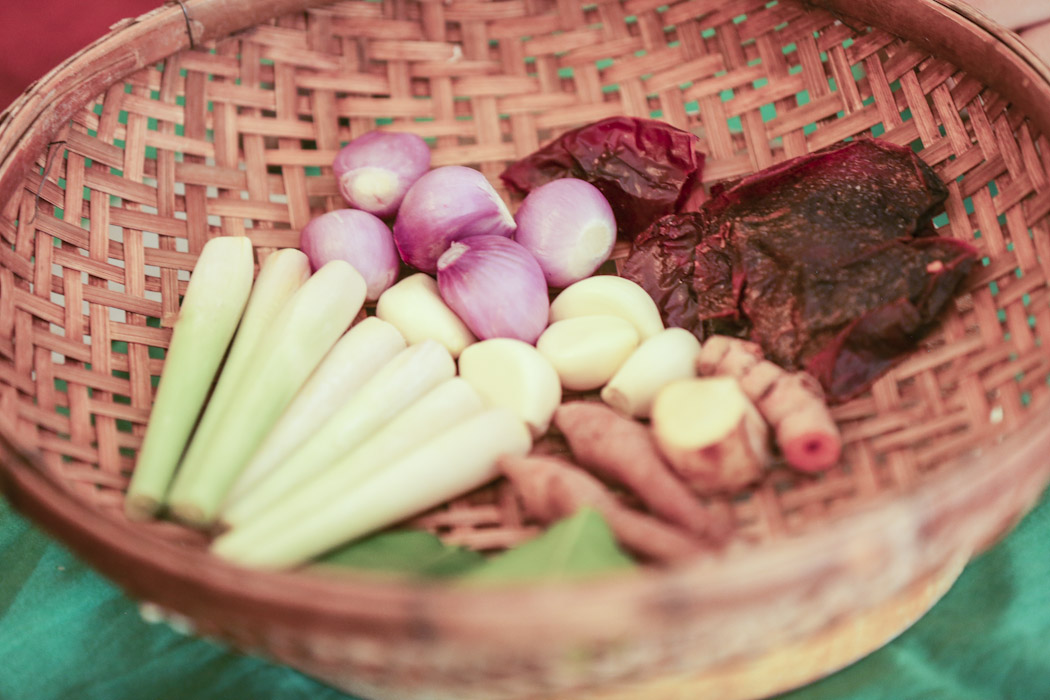
The secret for the making of the Amok is the paste in which the fish (or meat) is involved before cooking. This paste is prepared in a mortar, in which all ingredients are grounded until a paste is formed. When we were preparing the items to the mortar (lemongrass, grass, shallot, curcuma, galangal, ginger, kaffir leaves, dried tomatoes and chili peppers) we knew immediately the result could only be tasty!
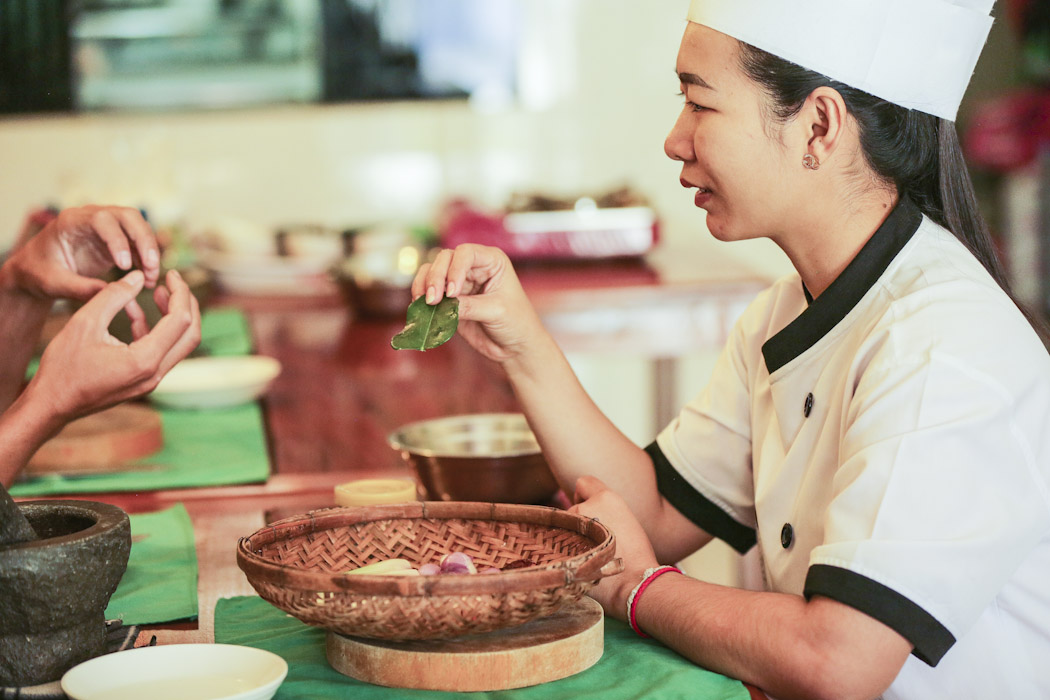
We first had to cut some of the ingredients into smaller pieces and only then we added them to the mortar to have them grounded until we got a paste. This is needed for the harder ingredients (such as the lemongrass, the kaffir leaves, the curcuma and the ginger).
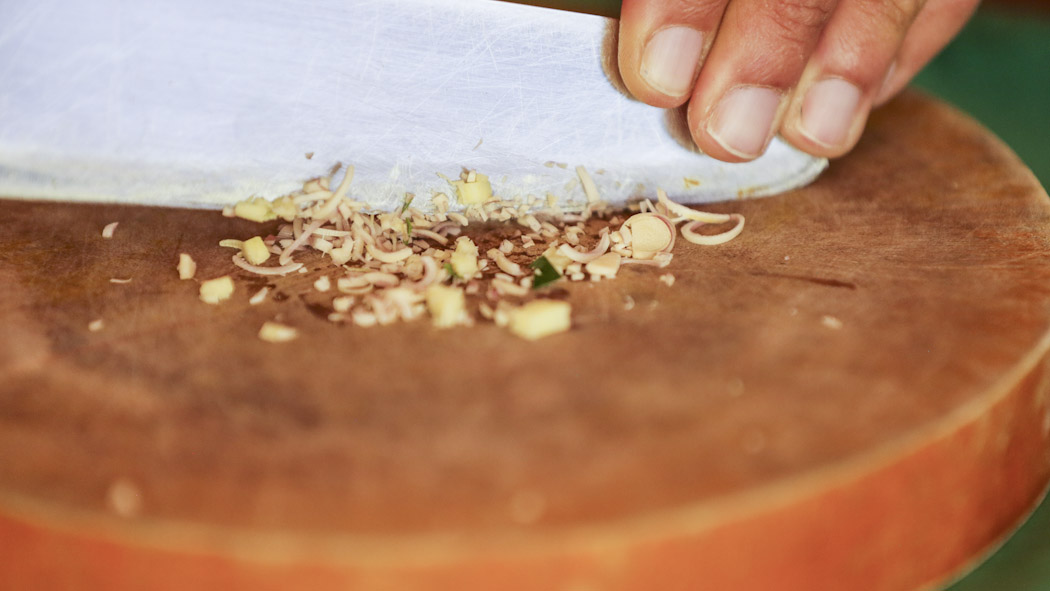
As soon as all is well-grounded, we can add the coconut milk to the paste in the mortar. It is this sauce that we will use to cook the fish (cut in small pieces) to which we also add some leaves of spinach. If wished, it is also possible to add a little bit of sugar and/or salt to this sauce.
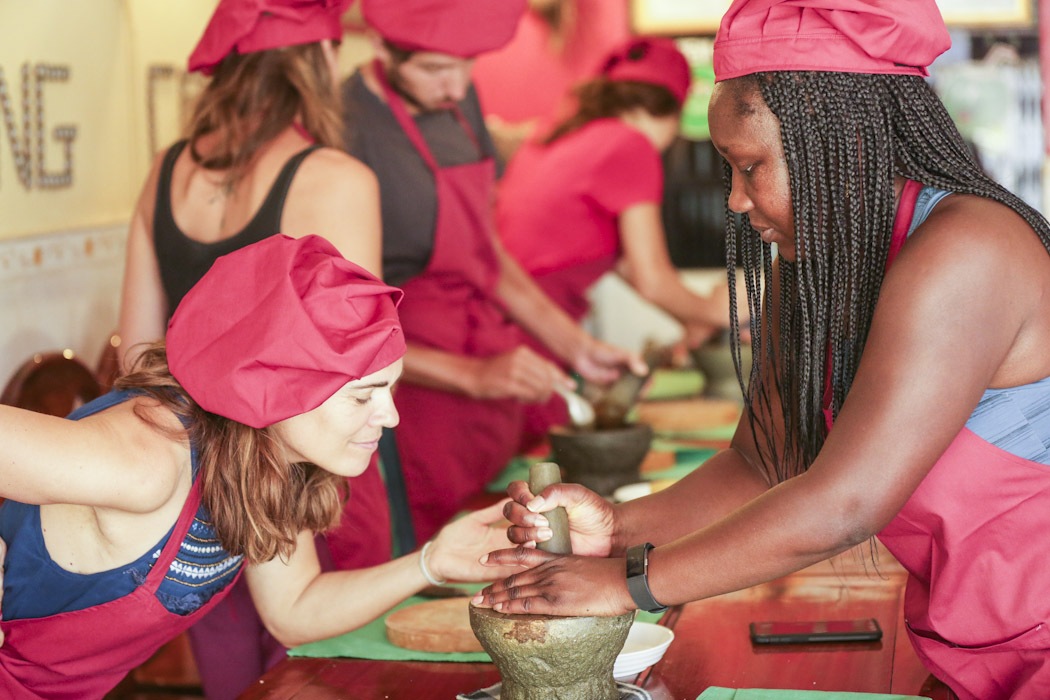
We were glad that the preparation of the paste was not done individually, instead, we were working in a group of three. It actually takes some time until the paste is formed and it requires a lot of arm-work. Jorge did a good job with the grounding and the rest of the team we checked regularly if the work was improving. After a good 15 minutes, we got the desired result.
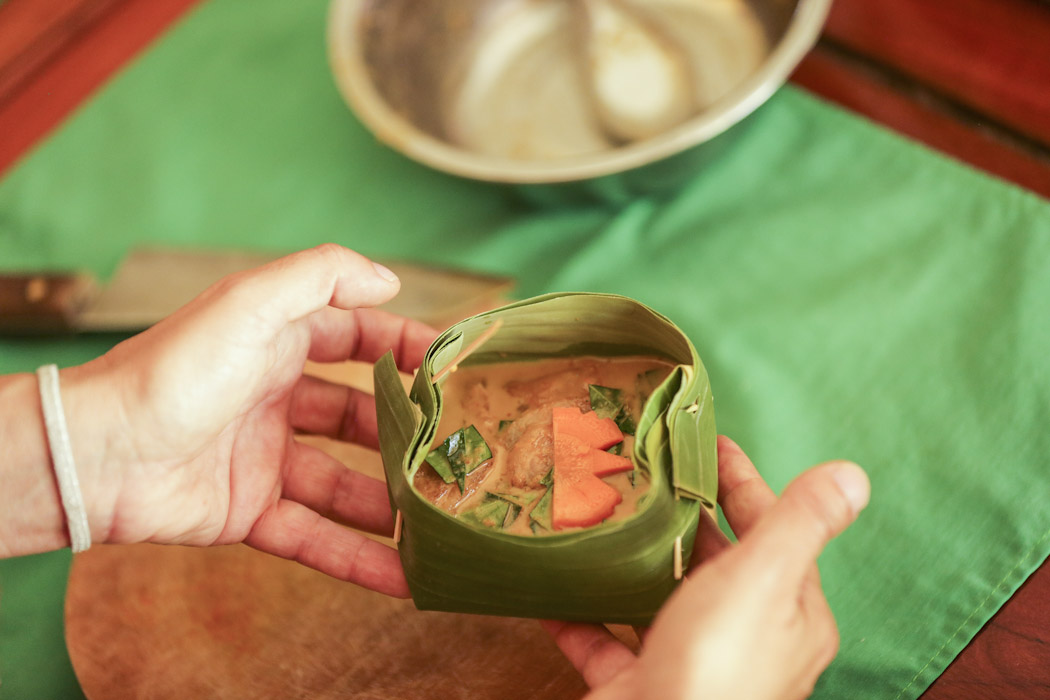
Once the sauce is ready, we pour it into a recipient which is made of the banana leaf. Don’t forget to add to the sauce the small pieces of fish, the spinach leaves and a piece of carrot for decoration. The fish will be steamed for twenty minutes in this recipient.
4. The preparation of the fried spring rolls and the green mango salad
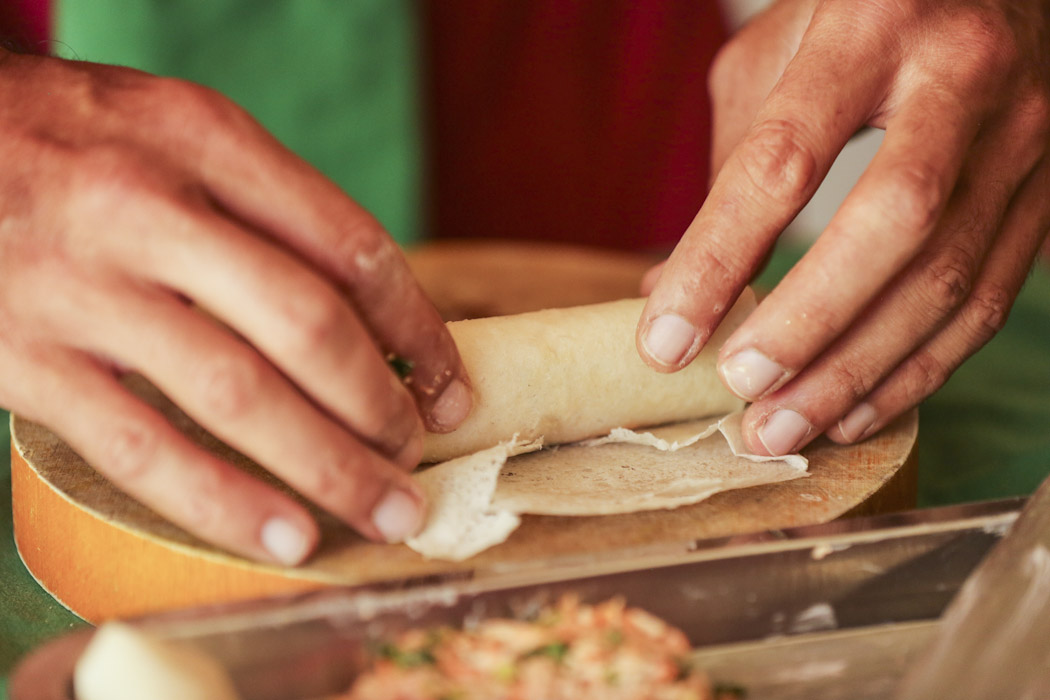
We left to the end the preparation of the Cambodian nems (spring rolls). They can be prepared with whichever ingredients you wish to add. The ones we prepared at the course were vegetarian. So we started by grating carrots, sweet potatoes and onions. We added a spoon of this mix into the rice paper wafer (which can be found in supermarkets) and then closed them by rolling them into a cylinder shape.
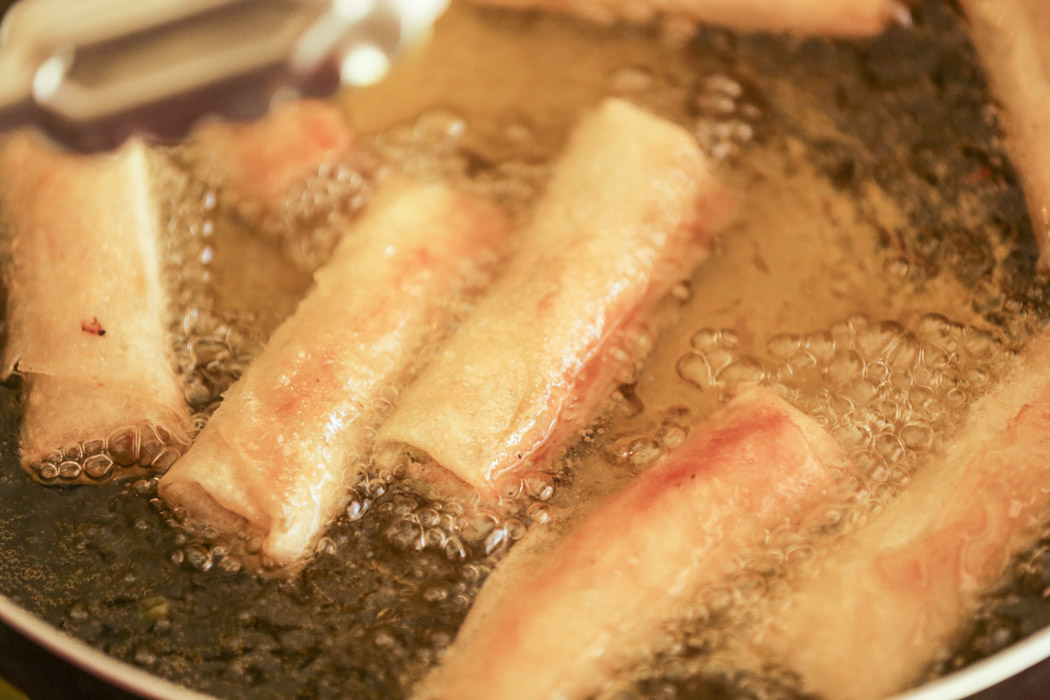
Once the rolls were all in their final shape, all we had to do was fry them in oil for a couple of minutes. We served them with a chili sauce, but occasionally they are served with a peanut sauce. Once the spring rolls were ready, we prepared our last dish, the mango salad. This was again another easy dish to make. Just grate a mango and add some coriander leaves and crushed peanuts. The secret of this salad is its vinaigrette, which is prepared in the mortar. All you need to add is garlic, shallot, nouc mam sauce, sugar, chili, lime juice and a few drops of an agri-douce sauce.
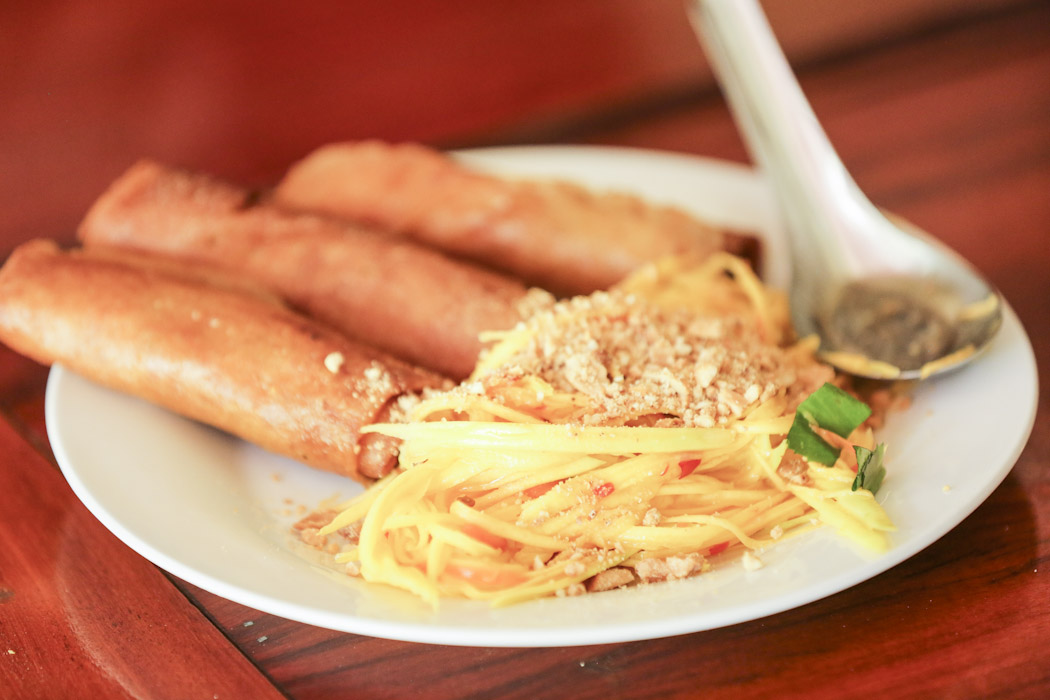
Serve the salad with the spring rolls and it is guaranteed you have a tasty and exotic starter for your guests!
Practical info:
- There are several restaurants offering cooking courses in Battambang, we chose the Coconut Lyly and did not regret it, the chef was friendly and could speak good English.
- Courses take half a day (4 hours) and include a visit to the market, the making of three dishes and finally eating the food you cooked. So, if you intend to have the course at lunchtime, you will need to be available since 10h00. If you want the course in the evening, you will need to go to the restaurant at 16h00.
- The course costs 25 dollars per person
- If you want to contact Coconut Lyly you can find their numbers online on their website.


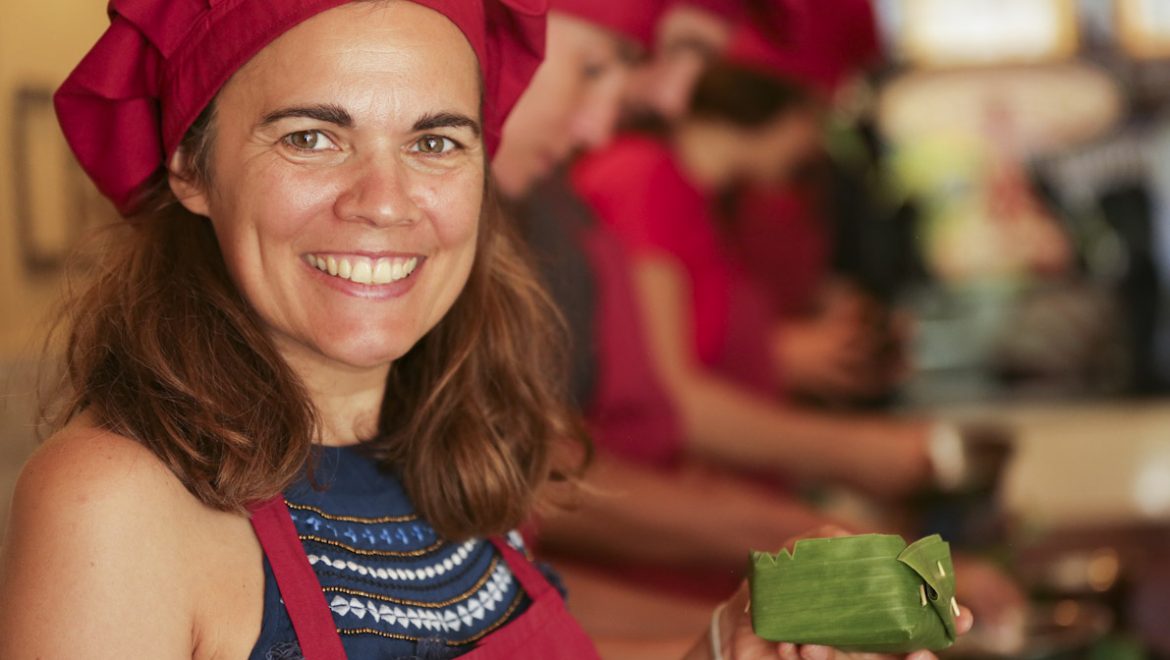

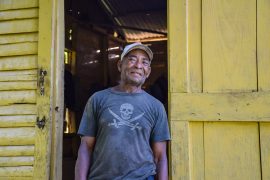






1 Comment